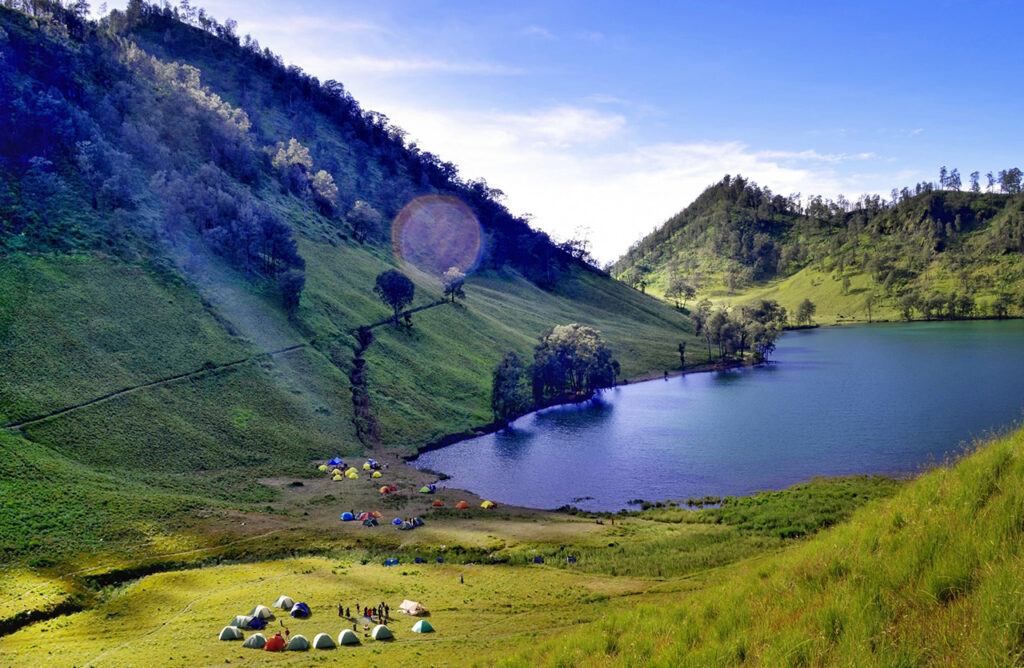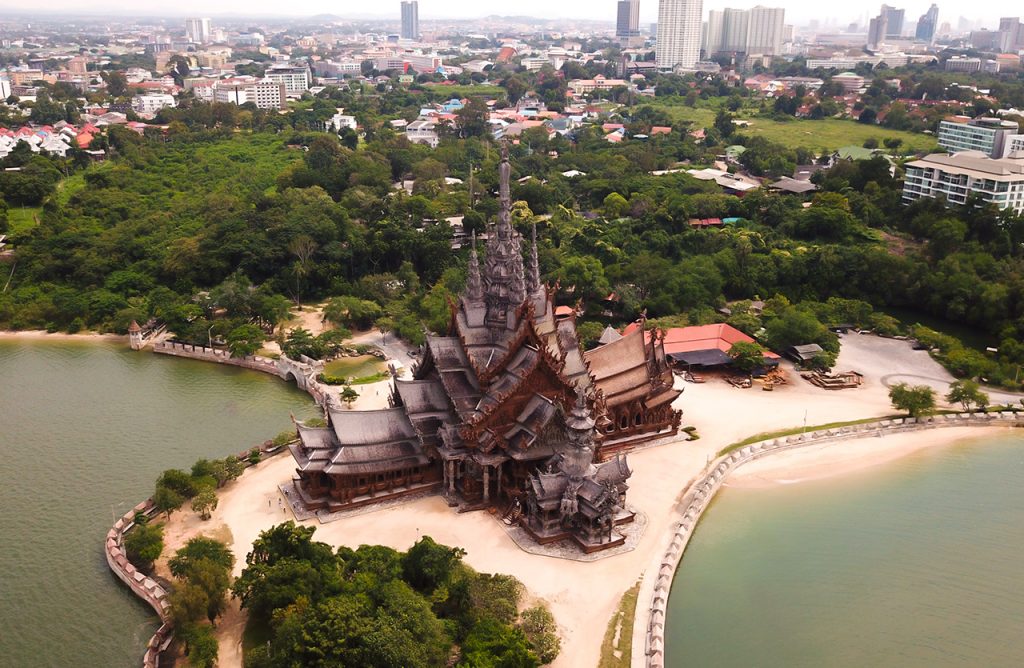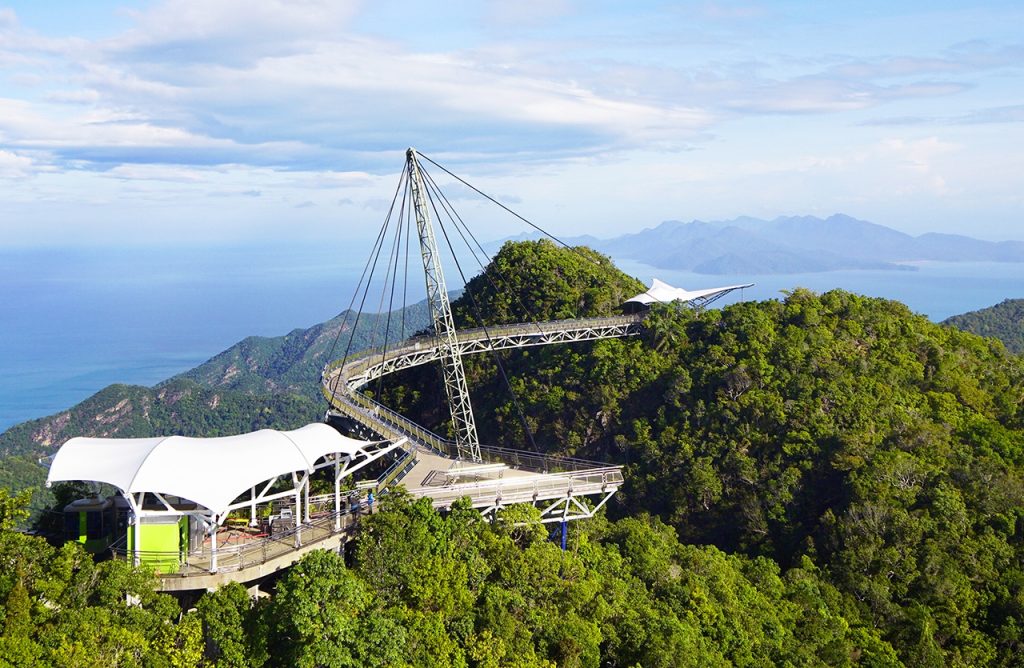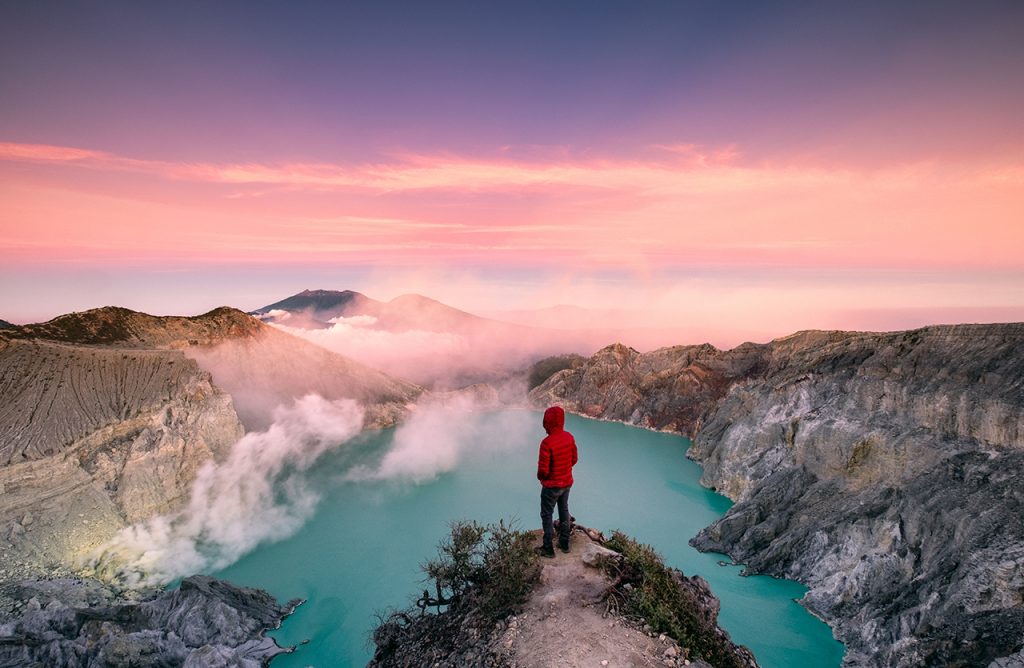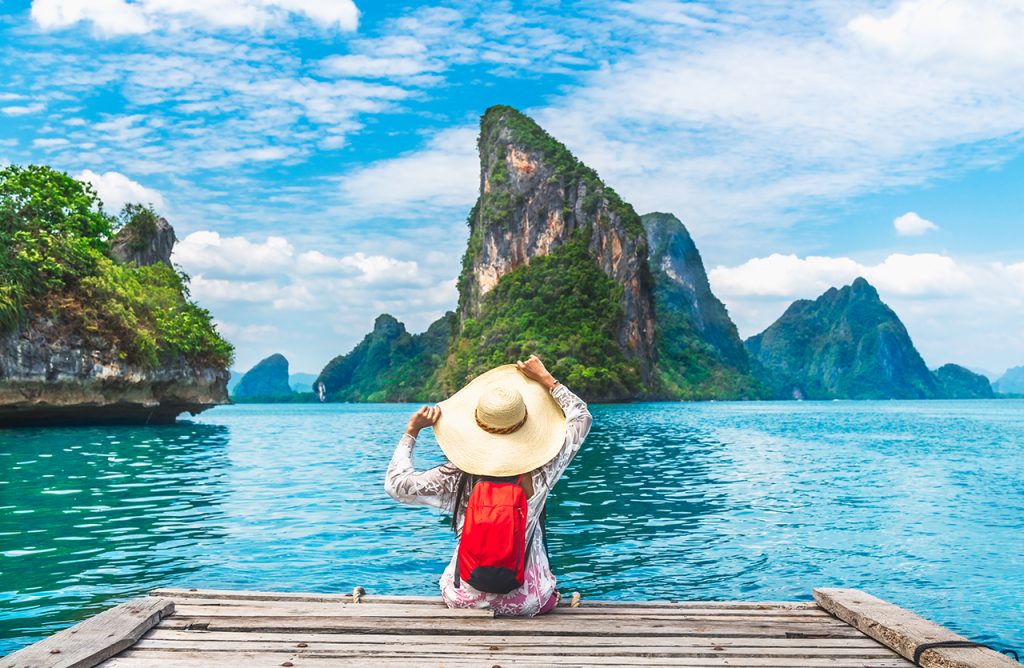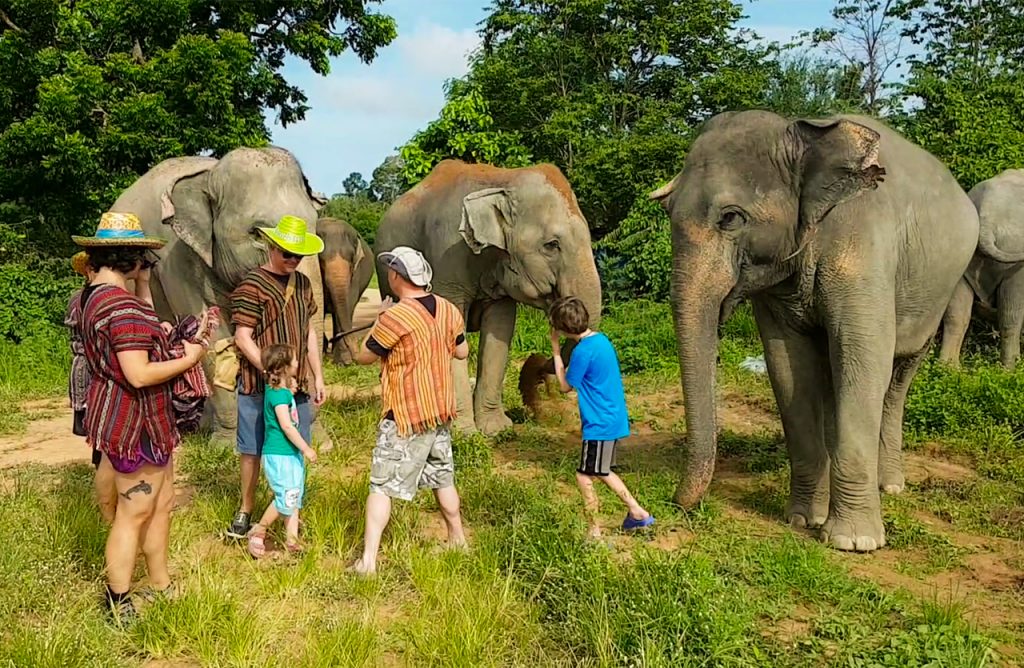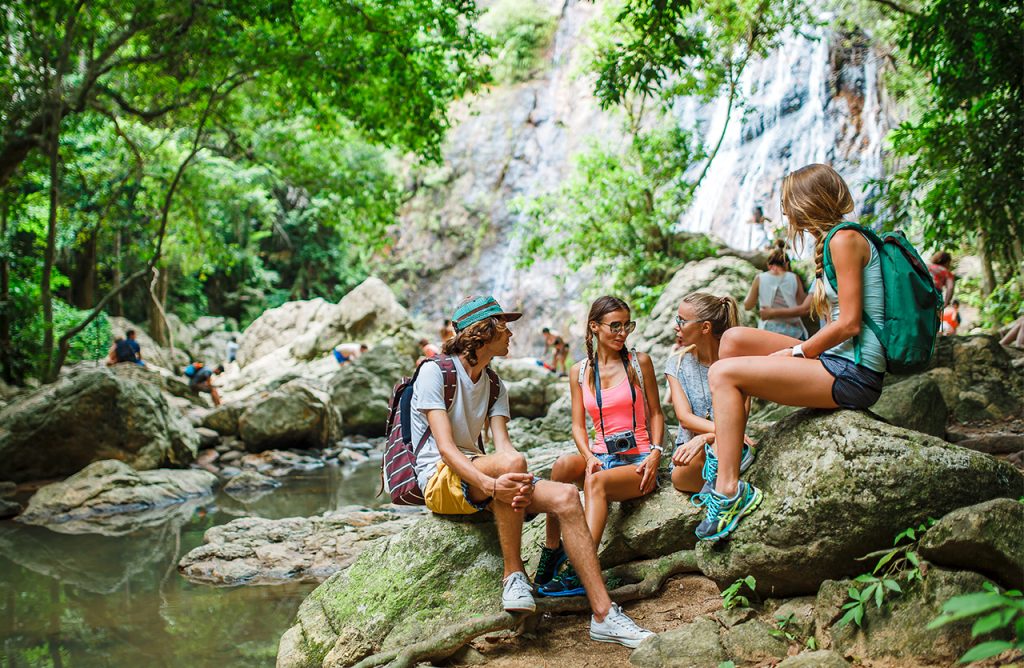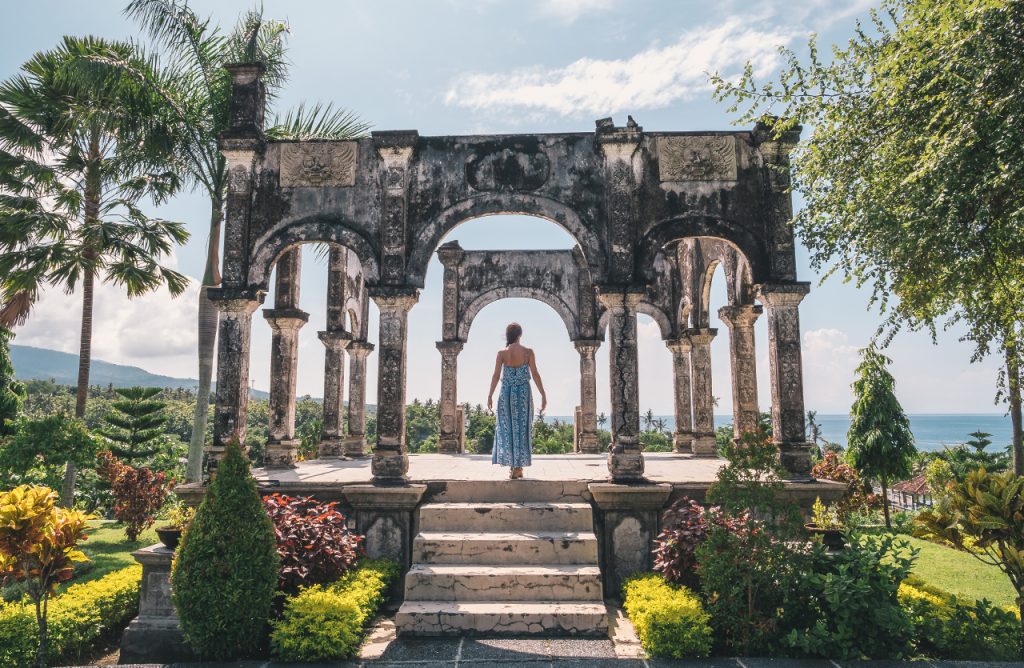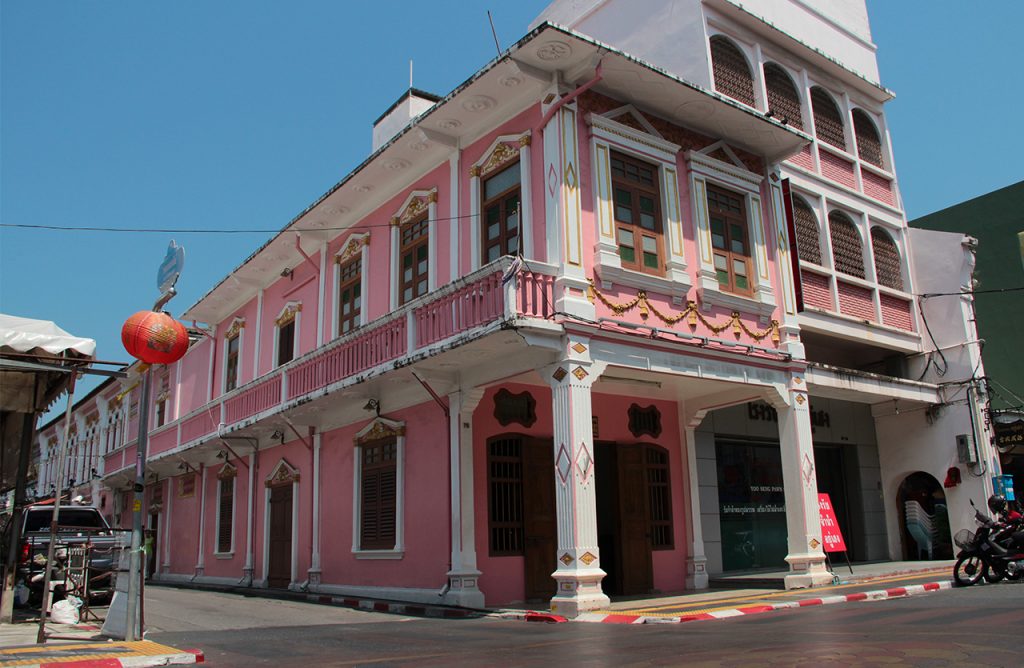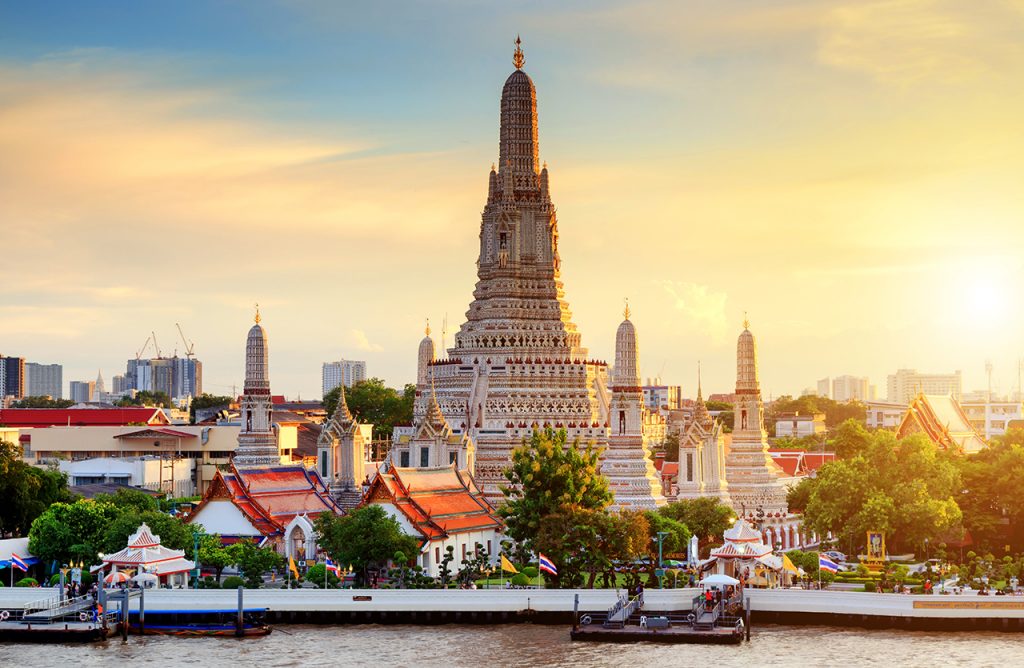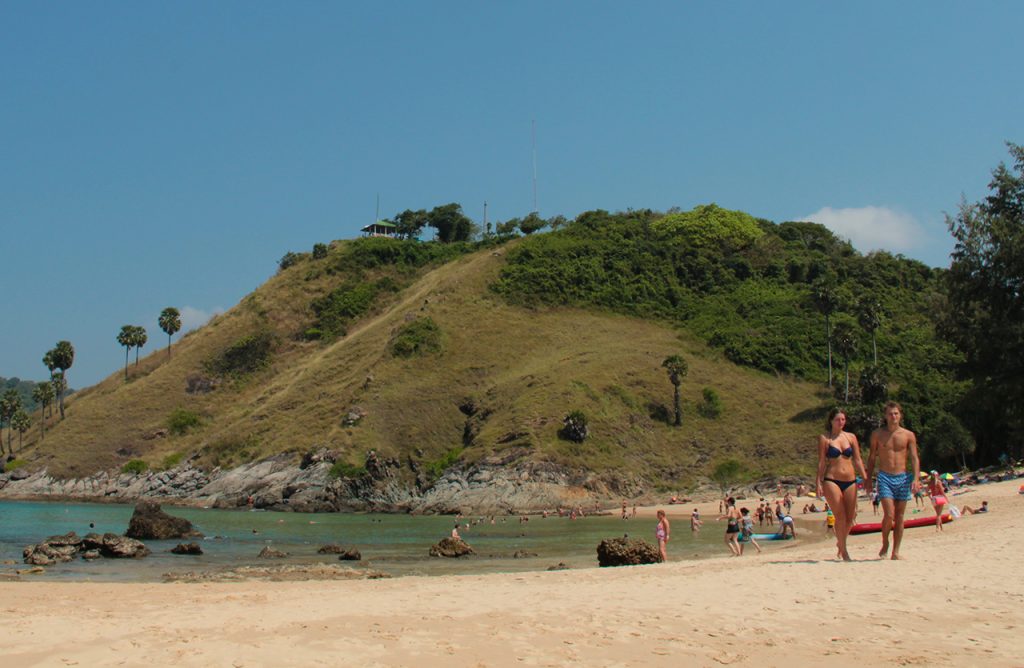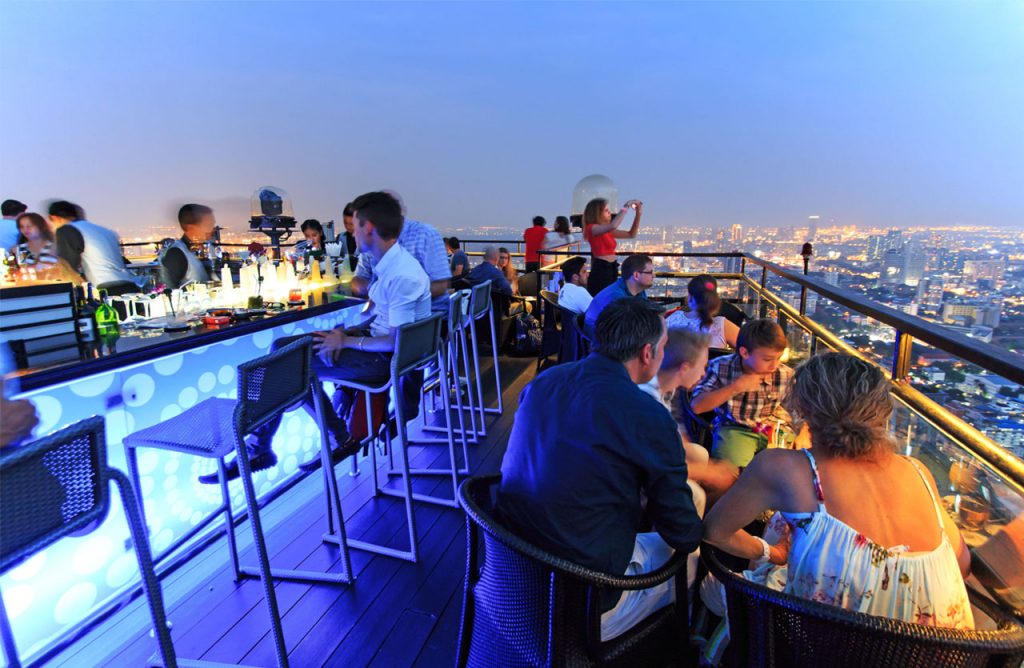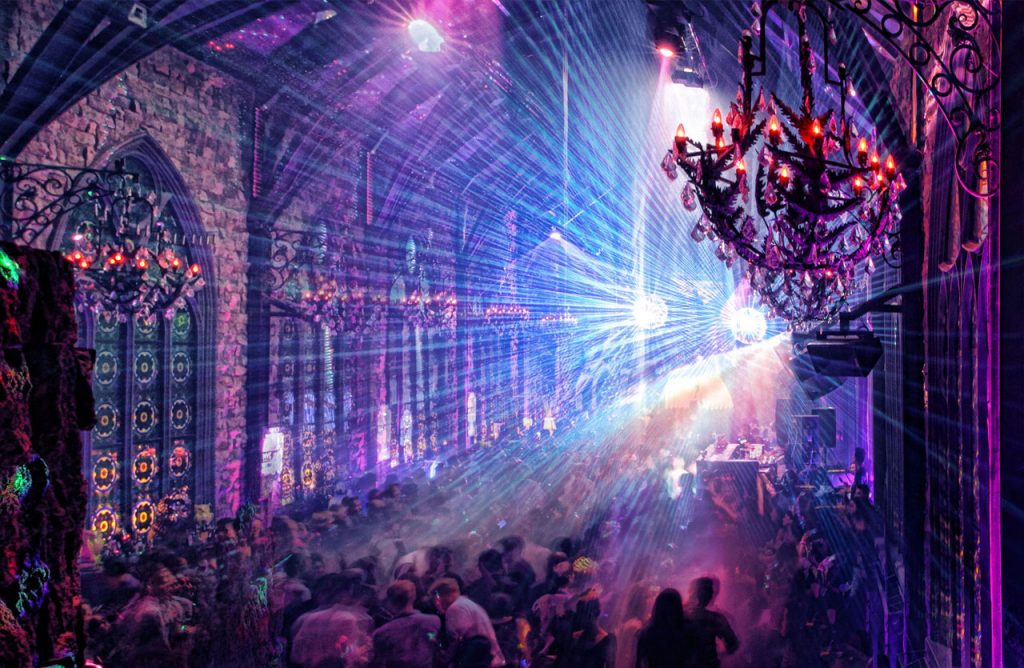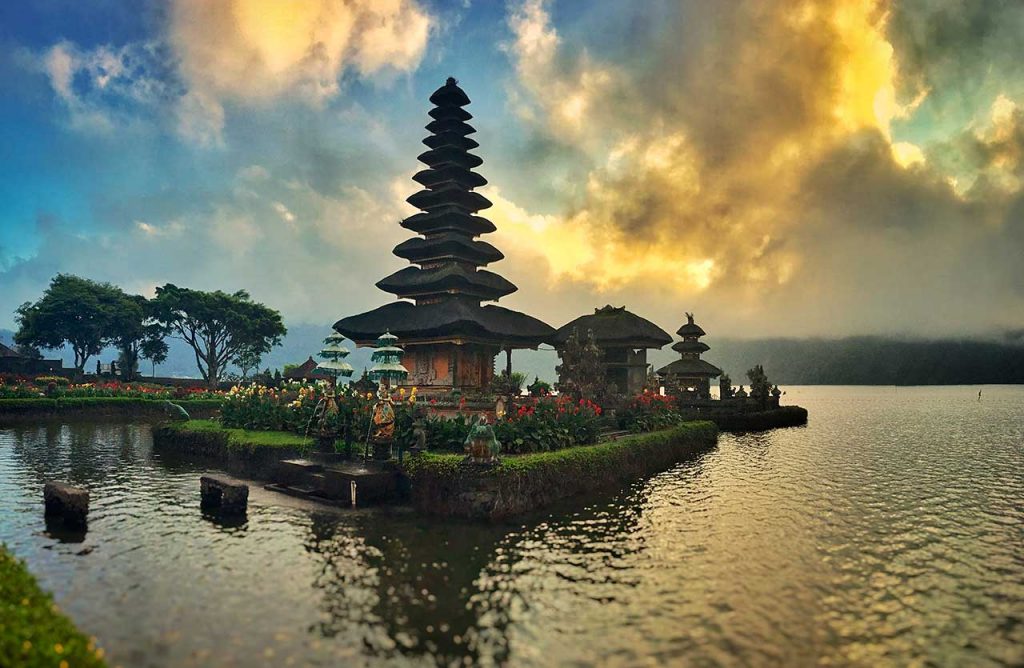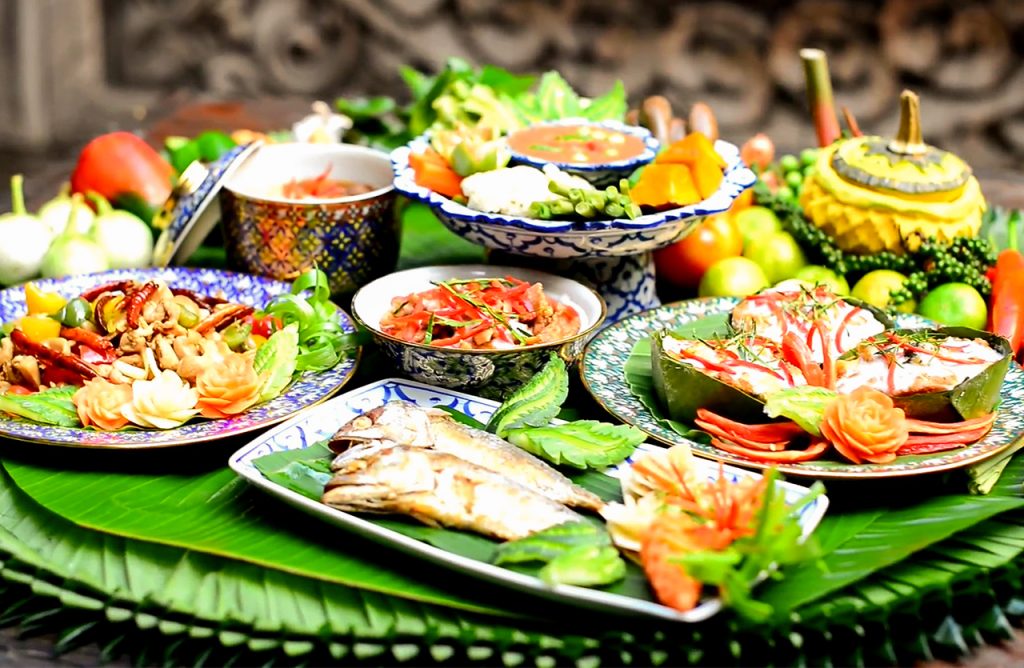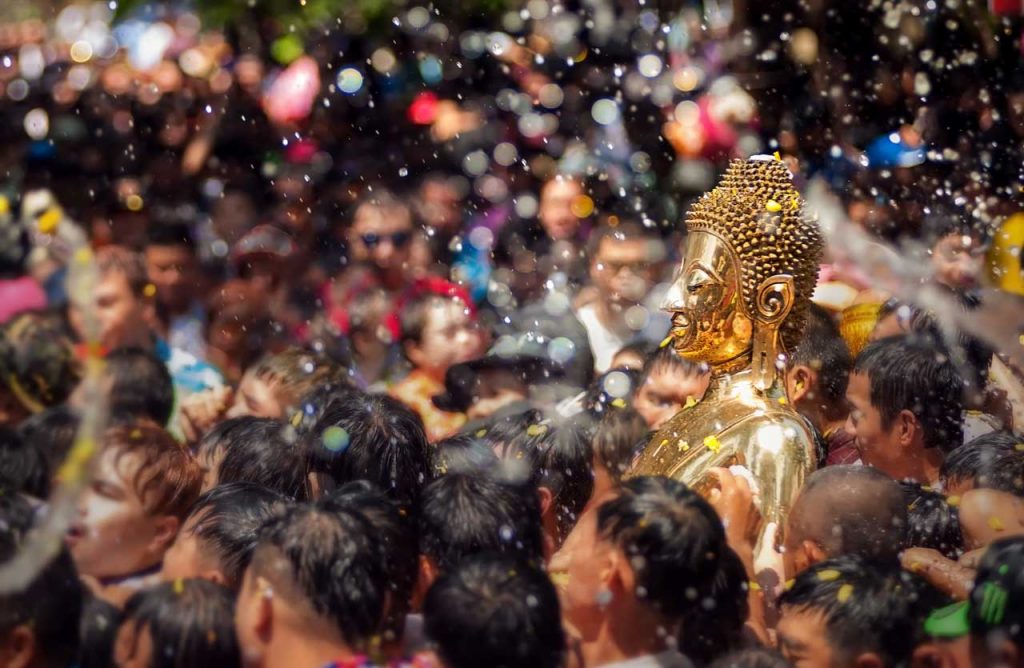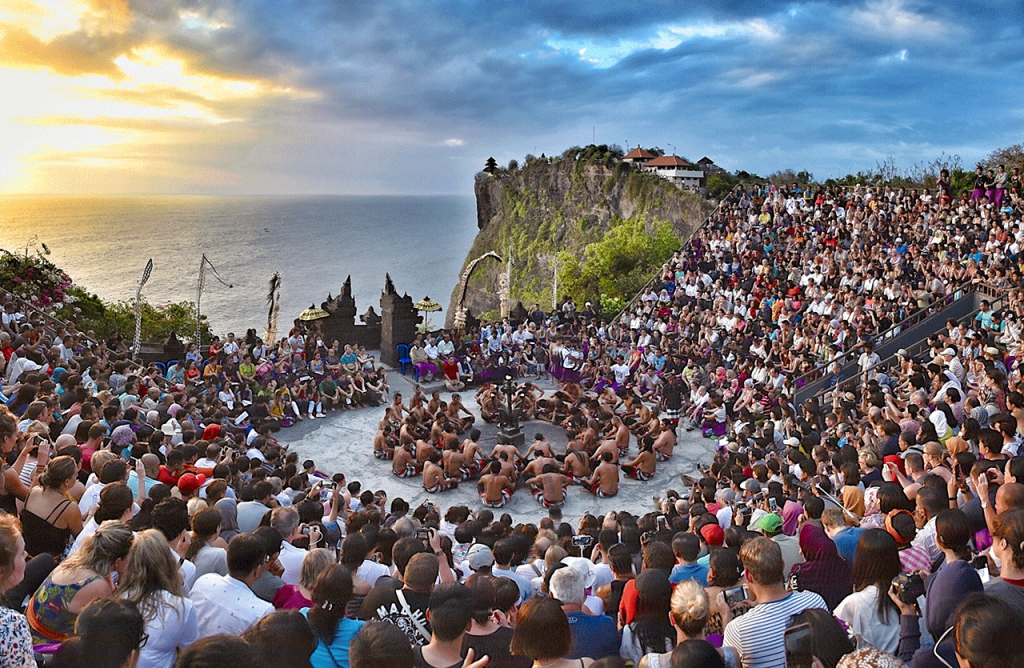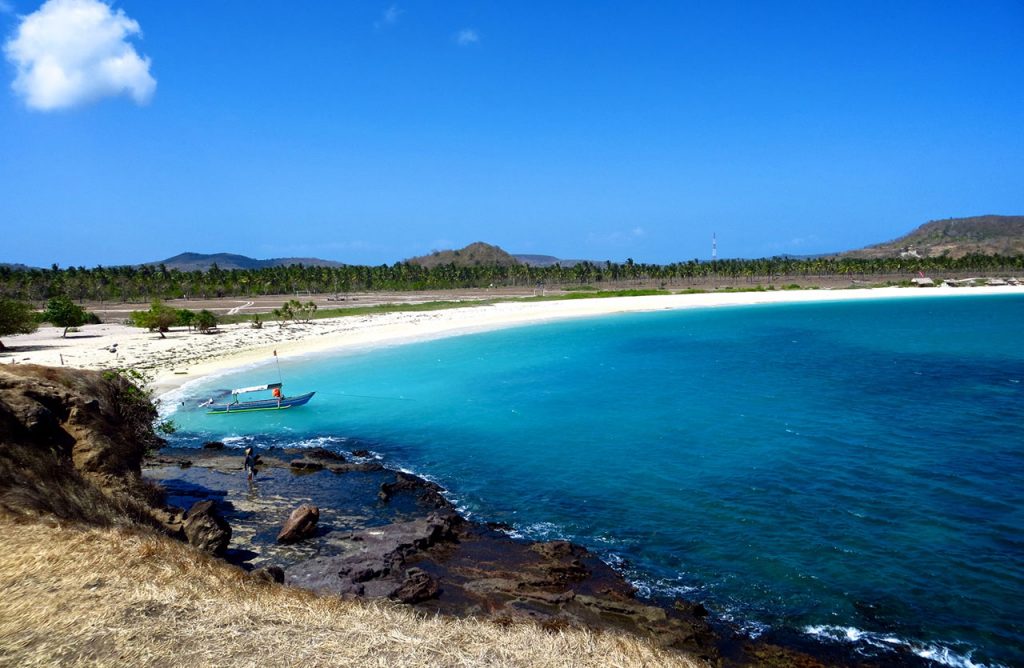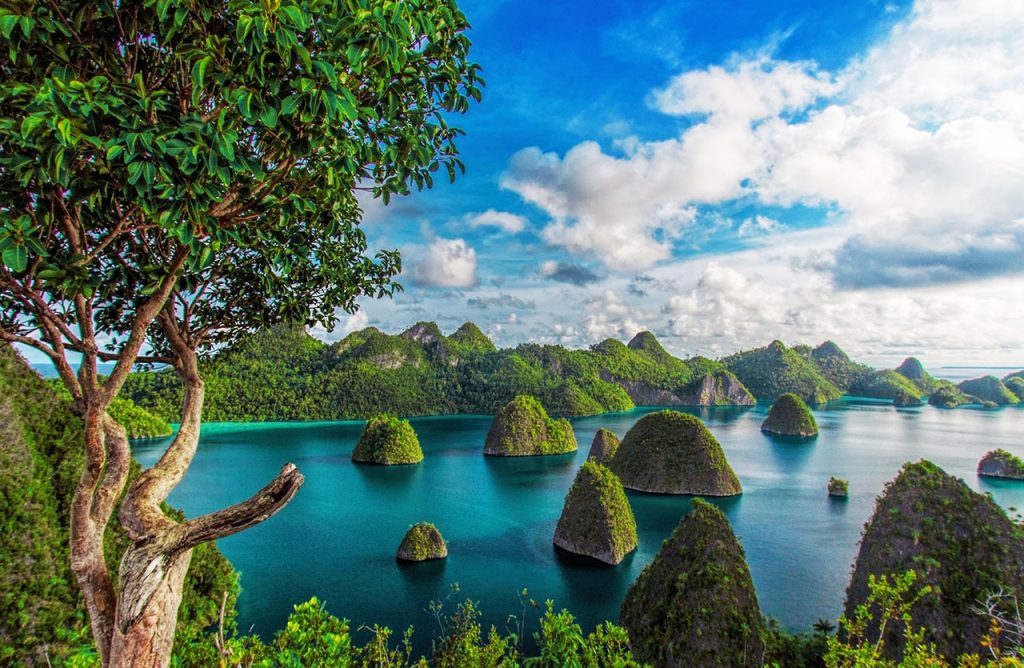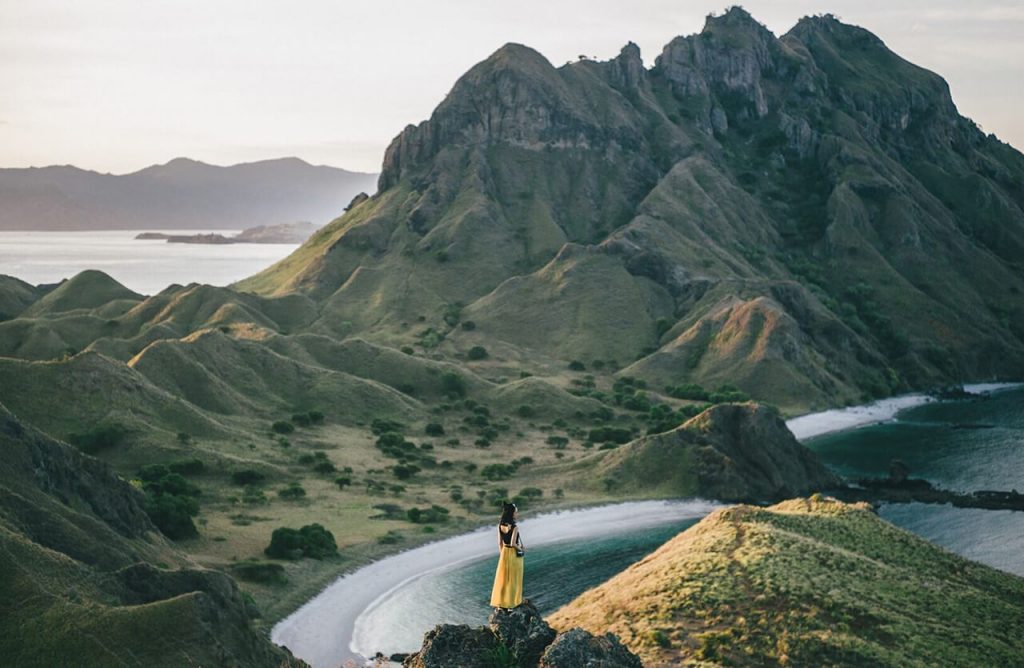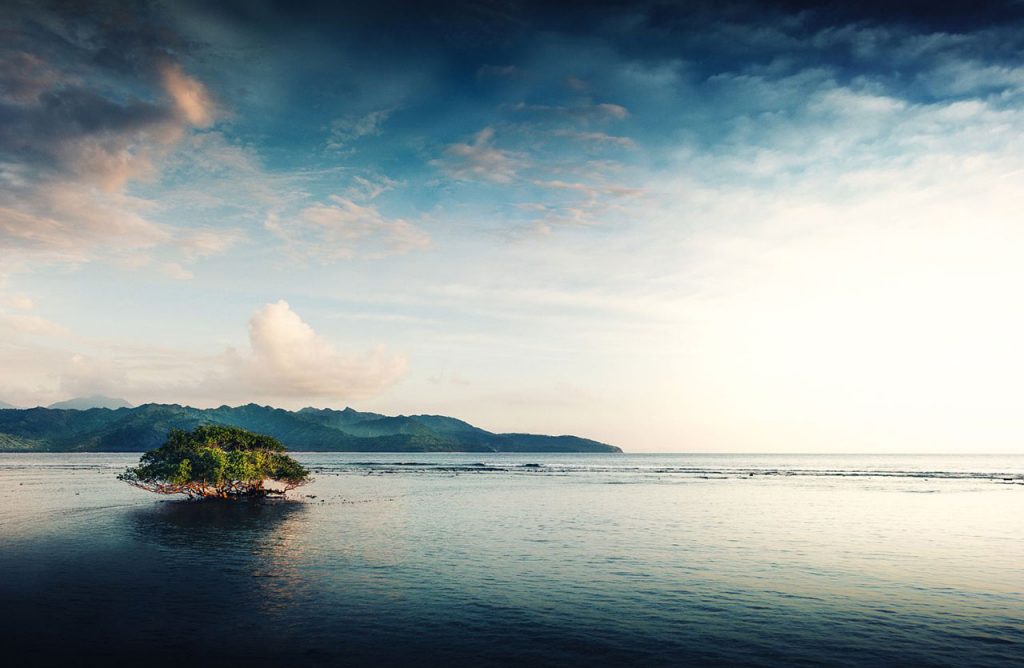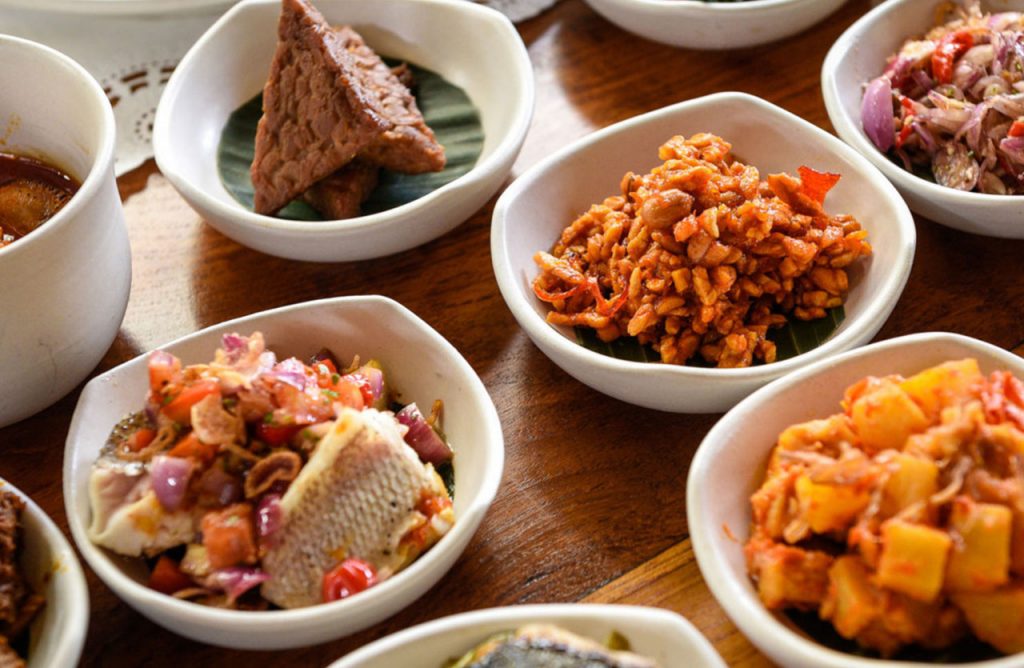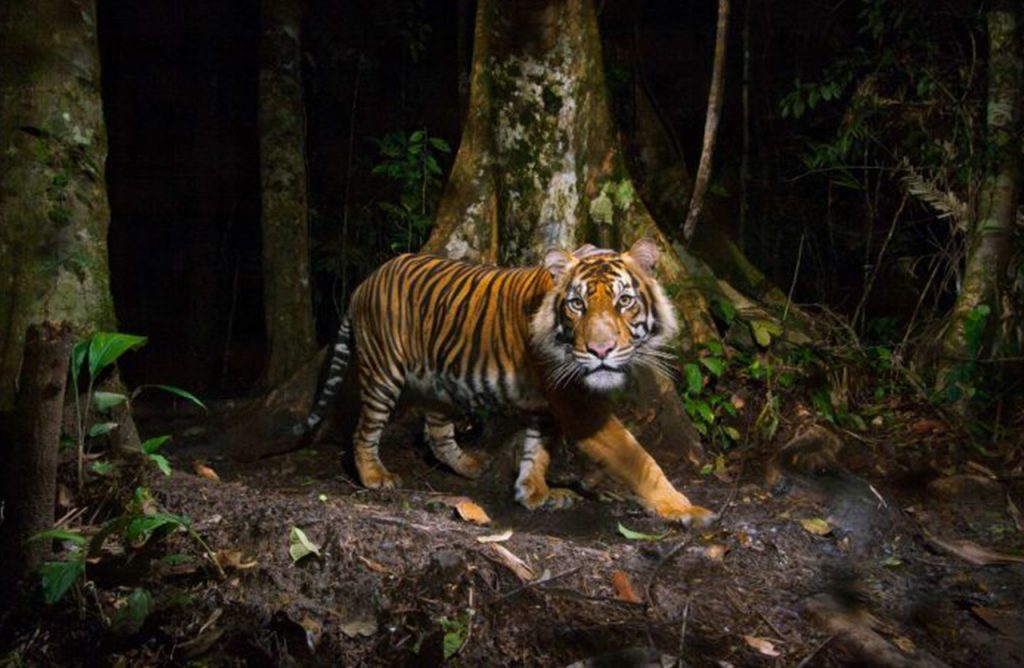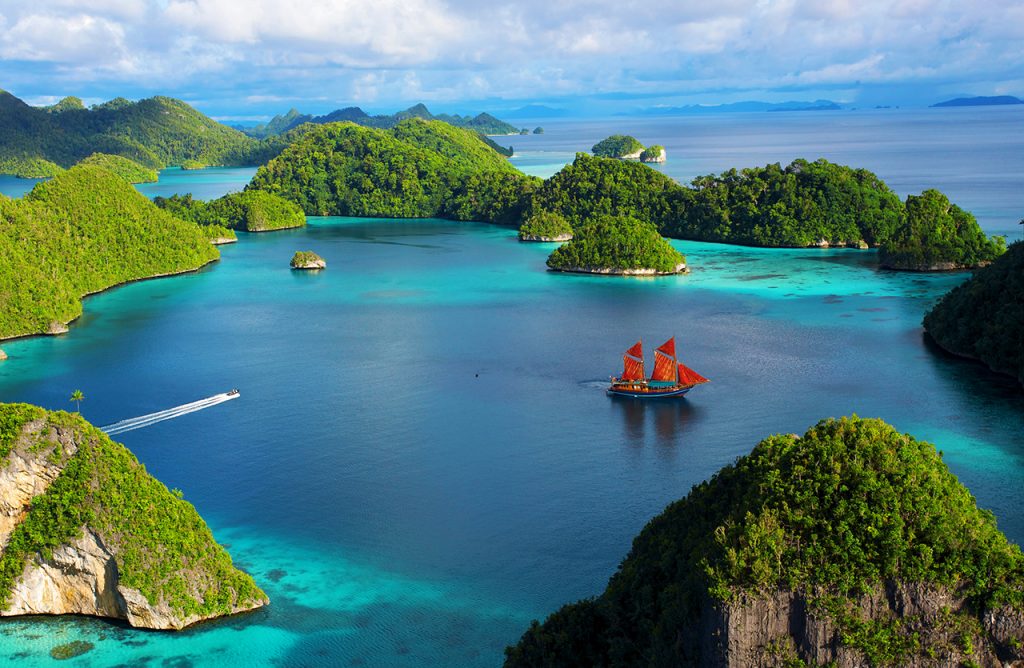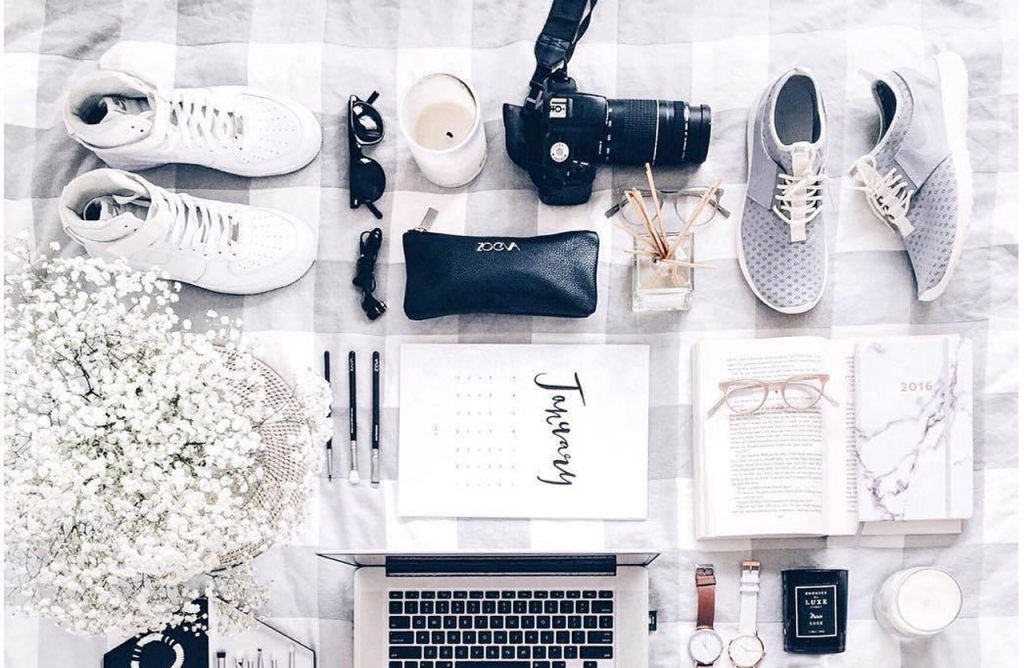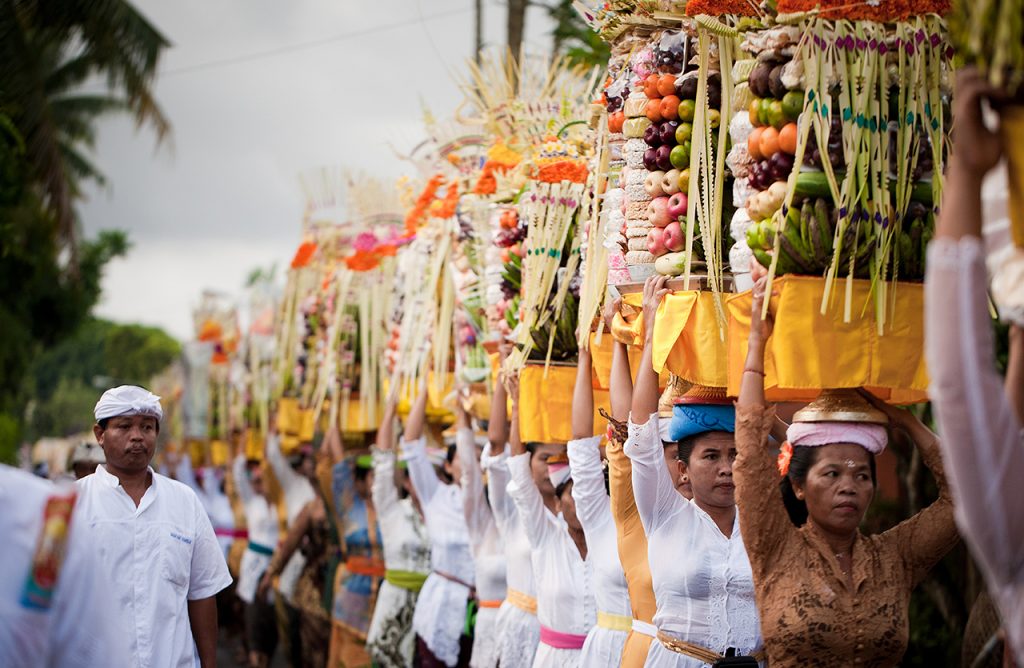

The top 10 Festivals and Celebrations of Indonesia
In Indonesia, the calendar is filled with festivals and celebrations, both traditional and contemporary. Thanks to its bewildering array of languages, ethnicities, traditions and beliefs, Indonesia offers visitors an infinite set of showpieces, some of which date back to prehistory. The modern stage is also a vibrant indication of Indonesia’s character; a country on the move, its cultural fabric interwoven with a long and storied past, but never afraid to break from tradition and party like there’s no tomorrow. In this article, Panorama Destination takes a look at ten of the most eye-catching and memorable festivals which and events in Indonesia.



Top 10: Festivals and Celebrations
In Indonesia, the calendar is filled with festivals and celebrations, both traditional and contemporary. Thanks to its bewildering array of languages, ethnicities, traditions and beliefs, Indonesia offers visitors an infinite set of showpieces, some of which date back to prehistory. The modern stage is also a vibrant indication of Indonesia’s character; a country on the move, its cultural fabric interwoven with a long and storied past, but never afraid to break from tradition and party like there’s no tomorrow. In this article, Panorama Destination takes a look at ten of the most eye-catching and memorable festivals which and events in Indonesia.

1. Pasola, Sumba
Pasola is the most spectacular and significant event in the calendar for the people of Sumba, East Nusa Tenggara.
Held annually in February and March, Pasola is a ritual battle, when tribes come together to act out war games and appease ancient animist gods with bloodshed. Fighting on horseback and clad in traditional ikat clothing, the warriors of Sumba hurtle towards each other at full tilt, throwing spears with unnerving and occasionally deadly accuracy.
A galloping blur of ancient pride and power, Pasola is one of Indonesia’s most unique and fleeting cultural extravaganzas. It offers intrepid travellers a glimpse back in time through dramatic traditions that have endured since prehistory. If the gods are willing and the festival falls during your stay, Pasola is an experience that stays with you forever.
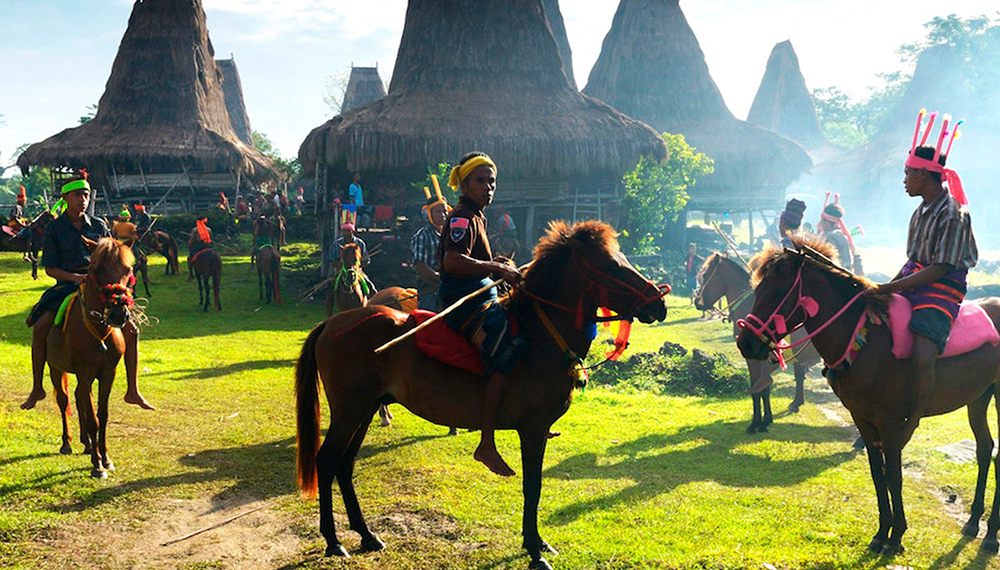
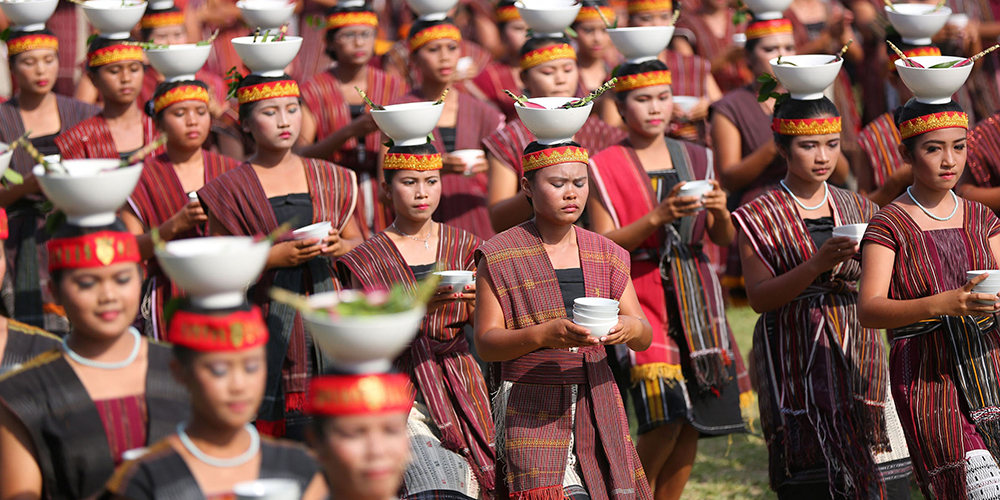
2. Lake Toba Festival, North Sumatra
Held in September each year, the Lake Toba Festival features music, arts and crafts, traditional sports competitions, a tourism seminar and exhibitions.
Among the many highlights of the festival, visitors can enjoy the Decorated Floats Parade, 4 Puak Colossal Dance, Lake Toba Caldera Geo Park, 5K Cross country Run, Folk Swimming Competition, Solu Dragon Boat Competition, Mocak and Tor-tor Tumba Dance, Toba Beauty Pageant and many more.
The festival also features art performances from the regencies around Lake Toba including from Sibolga, Batubara, Dairi, Karo, Samosir, Toba Samosir,
Padang Lawas, and North Tapanuli.
3. Djakarta Warehouse Project, Jakarta
Djakarta Warehouse Project (or DWP) is an electrifying music festival held in the nation’s capital every December. It has ridden a wave of popularity and underground notoriety to become the biggest annual dance music festival to be found anywhere in Southeast Asia.
DWP welcomes approximately 75,000 partygoers from around the world, drawn like moths to the bright lights and heavy beats. Many stellar names from the electronic music firmament light up the stage each year, will with superstar DJs such as Major Lazer, Blasterjaxx, Carl Cox, DJ Snake, Tiesto, Rudimental and Alan Walker some of the previous headliners.
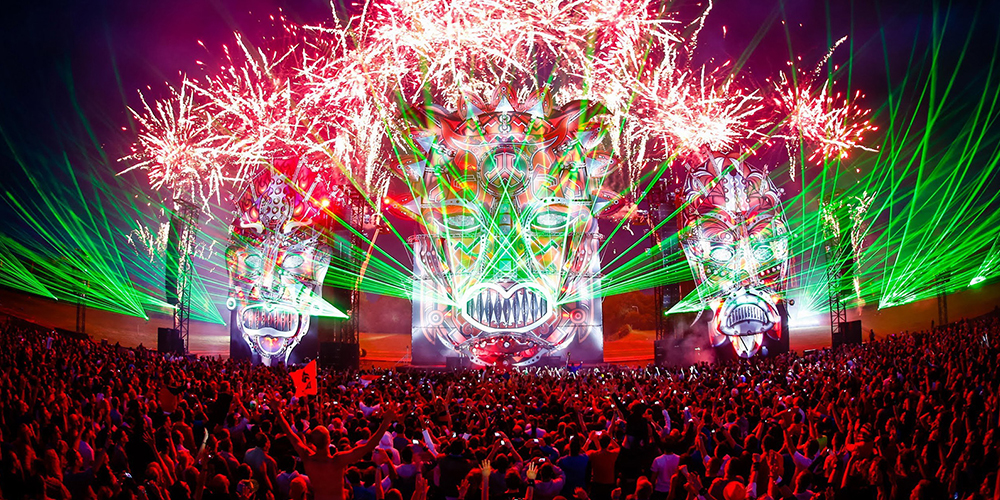
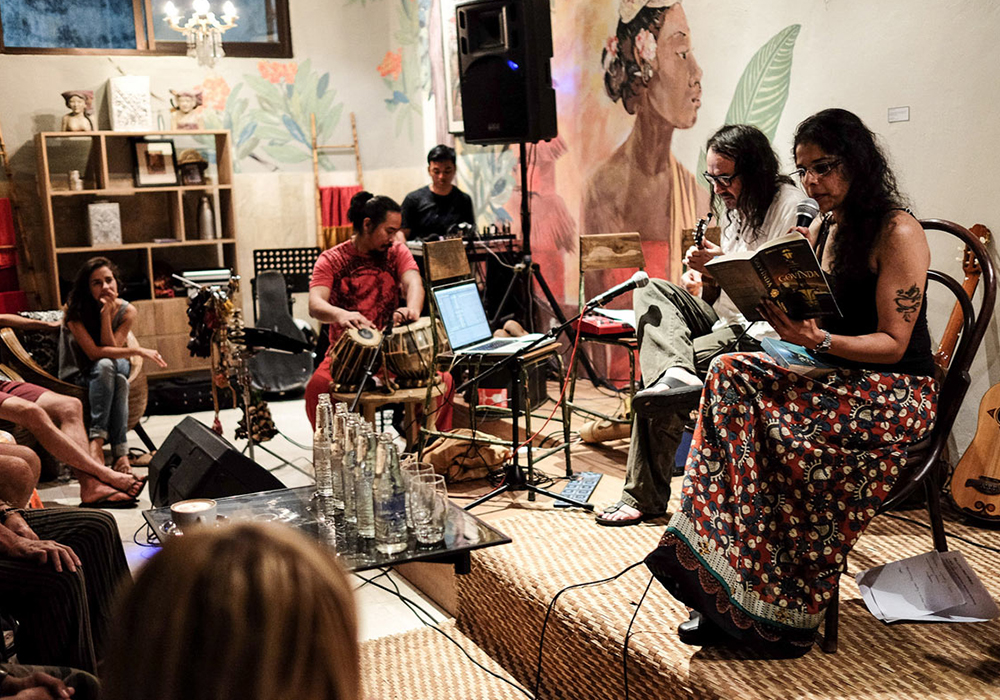
4. Ubud Readers and Writers Festival, Bali
Southeast Asia’s largest and most renowned cultural and literary event, Ubud Writers and Readers Festival (UWRF) brings together a diverse mix of Indonesian and international writers, speakers, thinkers, artists, advocates, commentators and activists, to create a space for cross-cultural dialogue and connection.
From literary luminaries to rising stars, political insiders to human rights activists, feminist filmmakers to social advocates, plus an undercover journalist, beauty queens, a comedy icons, World Poetry Slam champs, and more, this is truly a literature fiesta for all.
Located in Ubud, the cultural heart of Bali, the festival champions the transformative and revelatory power of literature and the arts. This powerful ideology is also crucial to the collective identity of Indonesia – uniting people from incredibly diverse religious, ethnic, cultural and historical backgrounds to share common respect and understanding.
Ubud Readers and writers Festival is Southeast Asia’s premier celebration of words, ideas and commonality through creativity.
5. Dieng Culture Festival
In the highlands of Dieng in Java there is a phenomenon unique to the area, in which local children (anak bajang) naturally develop matted, dreadlock hair. The Dieng community believe the children’s unique hair comes directly from their ancestral leader Kyai Kolodete. They believe that the more the children’s hair becomes matted, so their lives will be more prosperous.
When they come of age, the children’s dreadlocks are cut in a ceremony to celebrate their passing into adulthood. Held annually in August, the event features a procession, after which ritual prayers are conducted in spiritual places such as the great Balaikambang pool, Bima temple, Sikidang crater, the cave by the great colour pool and traditional Dieng burial sites.
Besides the dreadlock cutting ceremony, Dieng Culture Festival also features the attractions of art, culture, Wayang Kulit shadow puppet shows, traditional dance, fireworks and art exhibitions particular to the ancient and storied mountains of the region.
Open and welcoming to outsiders, the people of the volcanic Dieng plateau offer an intriguing glimpse into ancient traditions and superstitions - the magic and mysticism of Java.
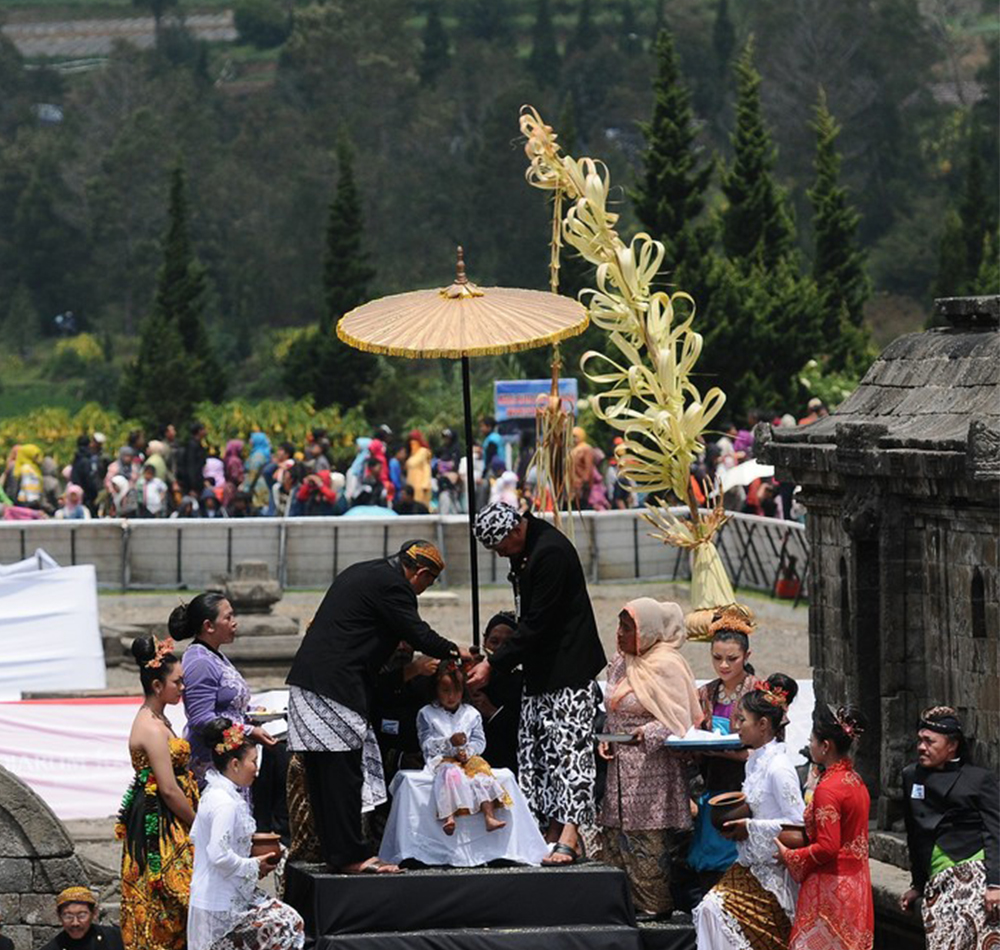
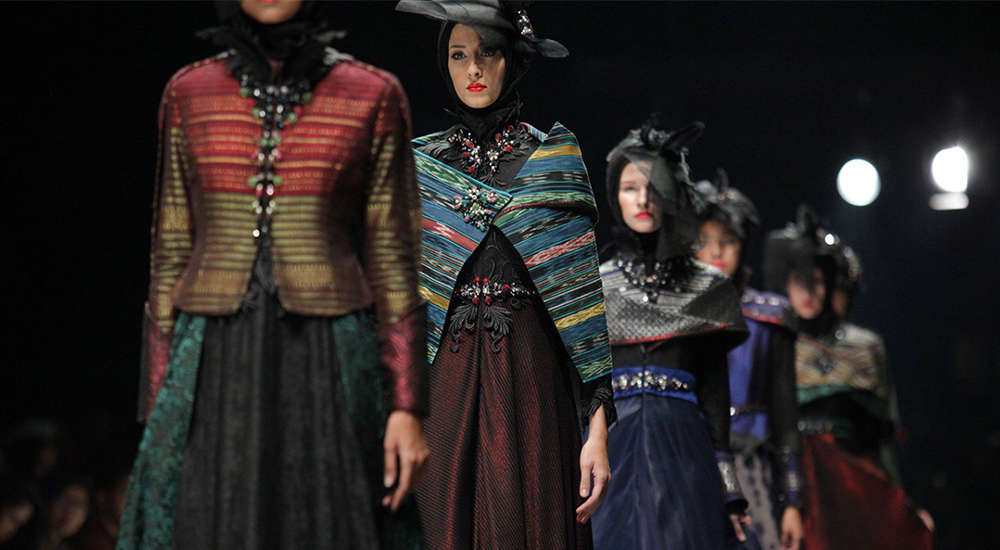
6. Jakarta Fashion Week
Since its creation 2008, Jakarta Fashion Week has been the stage for Southeast Asia’s largest celebration of fashion.
Usually held in October, the festival plays host to a wide range of designers, buyers, photographers, stylists, models and media moguls, during a week of extravagance and style.
Each year, Jakarta Fashion Week features a full and fabulous schedule of events celebrating the very best in international fashion. From the Designers’ Parade during the opening ceremony, to themed Fashion Tents, catwalks, Trunk Show, presentations, demonstrations and tutorials by some of the biggest names in international fashion and glamour.
sun are also readily available here, but it’s always better to have and not need, rather than risk needing but not having either of them.
7. Java Jazz, Jakarta
Java Jazz is the biggest musical event of the year in Indonesia; a three-day celebration of contemporary jazz that always proves to be a treat for music lovers from all over the world.
Since its creation in 2005, which attracted 48,000 audience members, Java Jazz has grown in size and stature. Now the festival hosts some of the top names in Indonesian music, along with a whole host of stellar international artists too.
Previous headliners have included James Brown, Brian McKnight, Toni Braxton, Jamie Lidell, Stevie Wonder, Chaka Khan, Giles Peterson, Jamie Cullum and Joss Stone. Last year’s event was a massive success, drawing in a record number of 114,000 visitors and culminating in a performance by David Foster, Chris Botti and Sting.
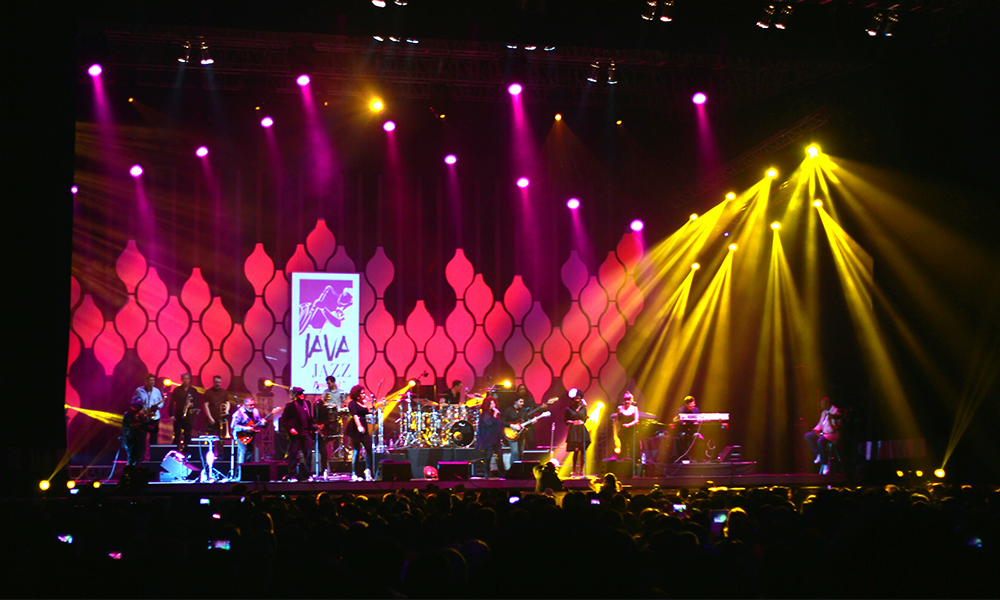
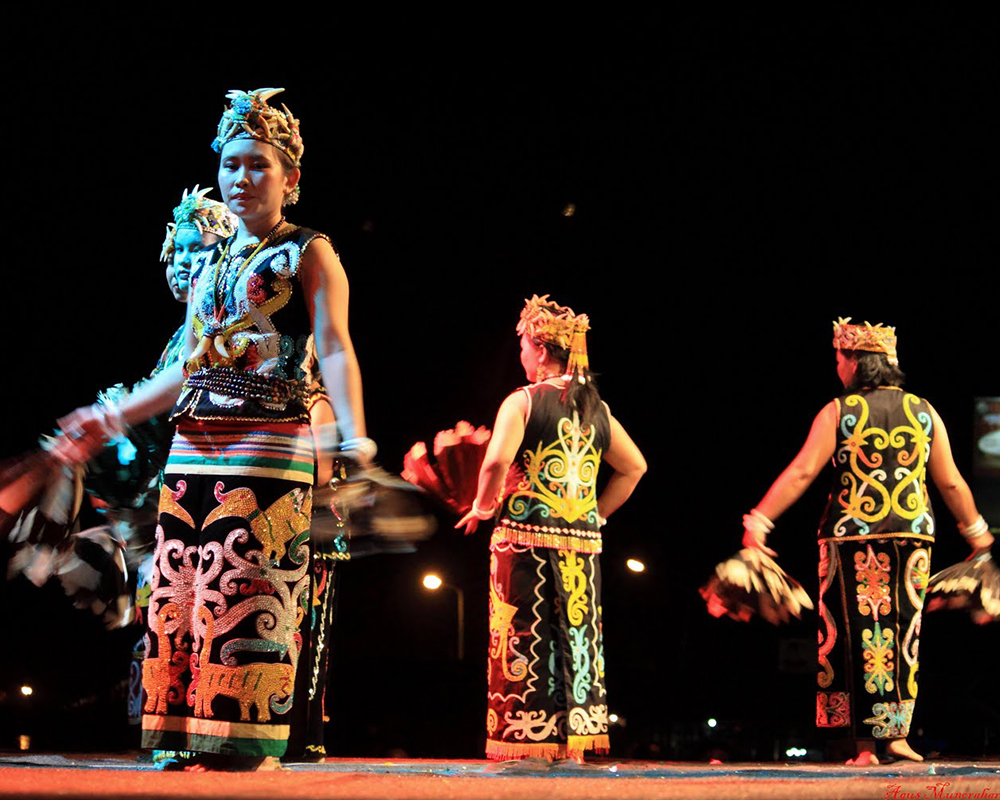
8. Erau Culture Festival, Kalimantan
Erau is one of the oldest cultures in Indonesia. In the Kutai language (East Kalimantan), ‘Erau’ means crowded, downstream, homecoming and joy. This multiplicity of meaning perhaps best encapsulates the festival, with myriad attractions and cultural intrigues on display.
Erau was first implemented around the 14th century when Aji Batara (known as the god of the milky way) was appointed Raja Kutai when he was five years old. Community members rejoice and party for 40 days and 40 nights, playing in the land, rivers and shores of the local region.
The Erau ceremony is celebrated to this day to commemorate the crowning of new Kutai Kings. One of the processions in the festival is the Beluluh, held in front of Kertanagara’s Kedaton Kasultanan. The purpose of the ceremony is to cleanse the Sultan of all elements of evil, through a process of sacred dance by the goddess and shaman. Besides the Beluhuh ceremony, the Erau Festival also features the Bapelas ceremony staged by the Sultanate. The Erau Culture Festival is held annually in August
9. Solo Batik Carnival, Central Java
Held in July every year, Solo Batik Carnival is a colourful parade of extravagant designs, dance and performance through the streets of Solo in Central Java.
Solo is the cultural heartland of Java, where traditional practices are proudly performed and celebrated on the modern stage. For one special day in July, the best batik makers from far and wide come together to present their creations.
The streets are lined with locals and the city takes on a fantastically flamboyant carnival atmosphere in preparation for the carnival. The parade itself features thousands of models, each wearing costumes more mind-bogglingly intricate and elaborate than the last. With music, dance and theatre all wrapped up in a riot of colour, Solo Batik Carnival is an unforgettable procession celebrating the showmanship and artistry of Indonesia.
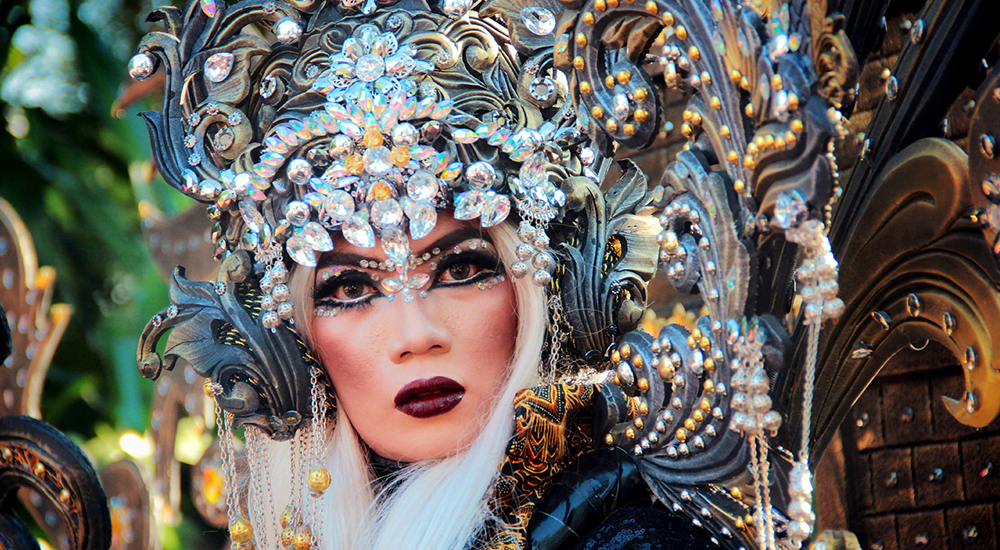
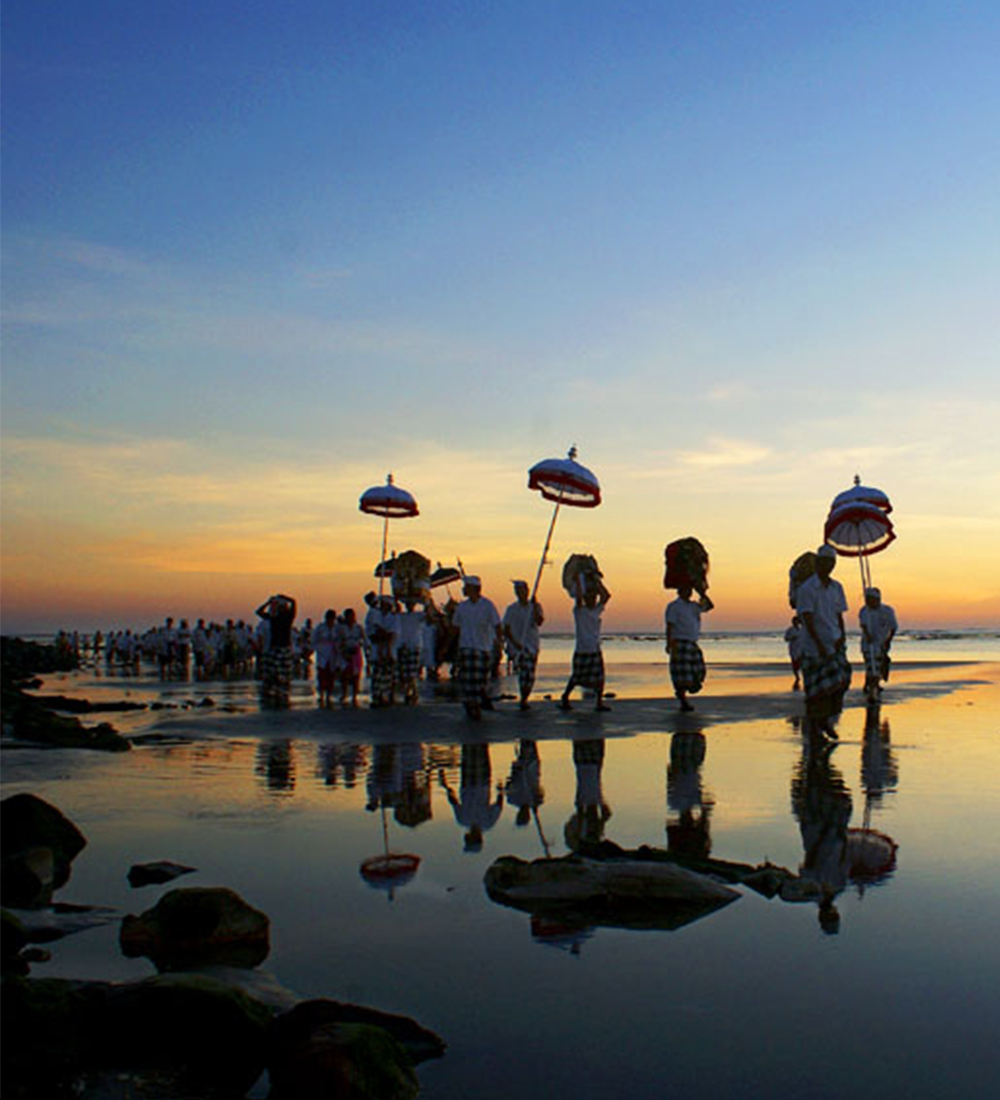
10. Nyepi, Bali
This is a New Year celebration unlike anywhere else on the planet. To celebrate the Saka New Year in March, daily activities in Bali come to a complete standstill. The usually pulsating streets are empty, no music plays, no voices can be heard and nobody steps outside their home for a whole day. It’s a bizarre and blissful return to tranquillity.
Although the festival is known as the Day of Silence, there’s plenty going on either side of the day itself that will turn up the volume on your adventures. There is a storm before the calm, with streets packed and bustling for colourful processions known as the Melasti pilgrimages during the three days before Nyepi itself. It is one of the best times to capture iconic Balinese processions on camera, as parasols, banners and small effigies offer an amazing cultural spectacle that’s found nowhere else on earth.
Most Balinese regard Nyepi as a sacred and much-anticipated special occasion. Travellers will be expected to observe the silence too. Some expats and visitors prefer to avoid Bali at this time, as the restrictions around transport, accommodation and even basic activities can be incompatible with holiday plans.
Despite this, Nyepi is worth experiencing at least once in a lifetime; festivities either side of the festival are spectacular, plus the day itself offers an eerily wonderful insight into the culture of Balinese celebrations and worship.
1. Pasola, Sumba
Pasola is the most spectacular and significant event in the calendar for the people of Sumba, East Nusa Tenggara.
Held annually in February and March, Pasola is a ritual battle, when tribes come together to act out war games and appease ancient animist gods with bloodshed. Fighting on horseback and clad in traditional ikat clothing, the warriors of Sumba hurtle towards each other at full tilt, throwing spears with unnerving and occasionally deadly accuracy.
A galloping blur of ancient pride and power, Pasola is one of Indonesia’s most unique and fleeting cultural extravaganzas. It offers intrepid travellers a glimpse back in time through dramatic traditions that have endured since prehistory. If the gods are willing and the festival falls during your stay, Pasola is an experience that stays with you forever.

2. Lake Toba Festival, North Sumatra
Held in September each year, the Lake Toba Festival features music, arts and crafts, traditional sports competitions, a tourism seminar and exhibitions.
Among the many highlights of the festival, visitors can enjoy the Decorated Floats Parade, 4 Puak Colossal Dance, Lake Toba Caldera Geo Park, 5K Cross country Run, Folk Swimming Competition, Solu Dragon Boat Competition, Mocak and Tor-tor Tumba Dance, Toba Beauty Pageant and many more.
The festival also features art performances from the regencies around Lake Toba including from Sibolga, Batubara, Dairi, Karo, Samosir, Toba Samosir,
Padang Lawas, and North Tapanuli.

3. Djakarta Warehouse Project, Jakarta
Djakarta Warehouse Project (or DWP) is an electrifying music festival held in the nation’s capital every December. It has ridden a wave of popularity and underground notoriety to become the biggest annual dance music festival to be found anywhere in Southeast Asia.
DWP welcomes approximately 75,000 partygoers from around the world, drawn like moths to the bright lights and heavy beats. Many stellar names from the electronic music firmament light up the stage each year, will with superstar DJs such as Major Lazer, Blasterjaxx, Carl Cox, DJ Snake, Tiesto, Rudimental and Alan Walker some of the previous headliners.

4. Ubud Readers and Writers Festival, Bali
Southeast Asia’s largest and most renowned cultural and literary event, Ubud Writers and Readers Festival (UWRF) brings together a diverse mix of Indonesian and international writers, speakers, thinkers, artists, advocates, commentators and activists, to create a space for cross-cultural dialogue and connection.
From literary luminaries to rising stars, political insiders to human rights activists, feminist filmmakers to social advocates, plus an undercover journalist, beauty queens, a comedy icons, World Poetry Slam champs, and more, this is truly a literature fiesta for all.
Located in Ubud, the cultural heart of Bali, the festival champions the transformative and revelatory power of literature and the arts. This powerful ideology is also crucial to the collective identity of Indonesia – uniting people from incredibly diverse religious, ethnic, cultural and historical backgrounds to share common respect and understanding.
Ubud Readers and writers Festival is Southeast Asia’s premier celebration of words, ideas and commonality through creativity.

5. Dieng Culture Festival
In the highlands of Dieng in Java there is a phenomenon unique to the area, in which local children (anak bajang) naturally develop matted, dreadlock hair. The Dieng community believe the children’s unique hair comes directly from their ancestral leader Kyai Kolodete. They believe that the more the children’s hair becomes matted, so their lives will be more prosperous.
When they come of age, the children’s dreadlocks are cut in a ceremony to celebrate their passing into adulthood. Held annually in August, the event features a procession, after which ritual prayers are conducted in spiritual places such as the great Balaikambang pool, Bima temple, Sikidang crater, the cave by the great colour pool and traditional Dieng burial sites.
Besides the dreadlock cutting ceremony, Dieng Culture Festival also features the attractions of art, culture, Wayang Kulit shadow puppet shows, traditional dance, fireworks and art exhibitions particular to the ancient and storied mountains of the region.
Open and welcoming to outsiders, the people of the volcanic Dieng plateau offer an intriguing glimpse into ancient traditions and superstitions - the magic and mysticism of Java.

6. Jakarta Fashion Week
Since its creation 2008, Jakarta Fashion Week has been the stage for Southeast Asia’s largest celebration of fashion.
Usually held in October, the festival plays host to a wide range of designers, buyers, photographers, stylists, models and media moguls, during a week of extravagance and style.
Each year, Jakarta Fashion Week features a full and fabulous schedule of events celebrating the very best in international fashion. From the Designers’ Parade during the opening ceremony, to themed Fashion Tents, catwalks, Trunk Show, presentations, demonstrations and tutorials by some of the biggest names in international fashion and glamour.
sun are also readily available here, but it’s always better to have and not need, rather than risk needing but not having either of them.

7. Java Jazz, Jakarta
Java Jazz is the biggest musical event of the year in Indonesia; a three-day celebration of contemporary jazz that always proves to be a treat for music lovers from all over the world.
Since its creation in 2005, which attracted 48,000 audience members, Java Jazz has grown in size and stature. Now the festival hosts some of the top names in Indonesian music, along with a whole host of stellar international artists too.
Previous headliners have included James Brown, Brian McKnight, Toni Braxton, Jamie Lidell, Stevie Wonder, Chaka Khan, Giles Peterson, Jamie Cullum and Joss Stone. Last year’s event was a massive success, drawing in a record number of 114,000 visitors and culminating in a performance by David Foster, Chris Botti and Sting.

8. Erau Culture Festival, Kalimantan
Erau is one of the oldest cultures in Indonesia. In the Kutai language (East Kalimantan), ‘Erau’ means crowded, downstream, homecoming and joy. This multiplicity of meaning perhaps best encapsulates the festival, with myriad attractions and cultural intrigues on display.
Erau was first implemented around the 14th century when Aji Batara (known as the god of the milky way) was appointed Raja Kutai when he was five years old. Community members rejoice and party for 40 days and 40 nights, playing in the land, rivers and shores of the local region.
The Erau ceremony is celebrated to this day to commemorate the crowning of new Kutai Kings. One of the processions in the festival is the Beluluh, held in front of Kertanagara’s Kedaton Kasultanan. The purpose of the ceremony is to cleanse the Sultan of all elements of evil, through a process of sacred dance by the goddess and shaman. Besides the Beluhuh ceremony, the Erau Festival also features the Bapelas ceremony staged by the Sultanate. The Erau Culture Festival is held annually in August

9. Solo Batik Carnival, Central Java
Held in July every year, Solo Batik Carnival is a colourful parade of extravagant designs, dance and performance through the streets of Solo in Central Java.
Solo is the cultural heartland of Java, where traditional practices are proudly performed and celebrated on the modern stage. For one special day in July, the best batik makers from far and wide come together to present their creations.
The streets are lined with locals and the city takes on a fantastically flamboyant carnival atmosphere in preparation for the carnival. The parade itself features thousands of models, each wearing costumes more mind-bogglingly intricate and elaborate than the last. With music, dance and theatre all wrapped up in a riot of colour, Solo Batik Carnival is an unforgettable procession celebrating the showmanship and artistry of Indonesia.

10.Nyepi, Bali
This is a New Year celebration unlike anywhere else on the planet. To celebrate the Saka New Year in March, daily activities in Bali come to a complete standstill. The usually pulsating streets are empty, no music plays, no voices can be heard and nobody steps outside their home for a whole day. It’s a bizarre and blissful return to tranquillity.
Although the festival is known as the Day of Silence, there’s plenty going on either side of the day itself that will turn up the volume on your adventures. There is a storm before the calm, with streets packed and bustling for colourful processions known as the Melasti pilgrimages during the three days before Nyepi itself. It is one of the best times to capture iconic Balinese processions on camera, as parasols, banners and small effigies offer an amazing cultural spectacle that’s found nowhere else on earth.
Most Balinese regard Nyepi as a sacred and much-anticipated special occasion. Travellers will be expected to observe the silence too. Some expats and visitors prefer to avoid Bali at this time, as the restrictions around transport, accommodation and even basic activities can be incompatible with holiday plans.
Despite this, Nyepi is worth experiencing at least once in a lifetime; festivities either side of the festival are spectacular, plus the day itself offers an eerily wonderful insight into the culture of Balinese celebrations and worship.

Top 5 Indonesian Destinations To Visit In 2023
3rd July 2022
With borders open and tourism back in business, international travellers can finally start planning their trip to Indonesia. There’s always somewhere new to explore in this enormous archipelago. In our latest Travel Tips, we take a look at five of […]
READ MOREBeyond Covid: 5 Tips For Safer Travel
18th November 2020
With borders reopening, travel restrictions being lifted and new visas now available, we can finally begin planning those long-awaited holidays in Thailand! After so long in lockdown, many travellers are nervous about heading abroad and want to know how they can stay safe. […]
READ MORETop 5 Experiences In Malaysia
30th October 2020
Lockdown getting you down? Maybe it’s time to start looking ahead to post-pandemic travel. With its unique blend of cosmopolitan culture, amazing food and wonderful nature, Malaysia is a holiday destination that packs in all your favourite holiday features. When Covid-19 restrictions are finally […]
READ MORETop 5: Adventures In East Java
25th October 2020
Looking for a little travel inspiration to keep you warm this winter? With a fiery mix of spice, volcanoes, artistry, tobacco and sunshine, East Java is the perfect place to get away from it all and turn up the heat […]
READ MOREThailand: Top Picks
21st October 2020
Looking forward to a little summer sun after months of lockdown? With Covid-19 restrictions finally being lifted and flights returning to Thailand, now is the time to start planning ahead for that long-awaited and much-anticipated getaway. If you’re wondering where to begin, Panorama […]
READ MORE5 Tips For Thai Animal Tourism
23rd September 2020
From elephants and tigers to dolphins, turtles and whales, Thailand offers some of the most amazing wildlife the world has to offer. However, tourism and the natural world don’t always mix. In this article, we provide some practical tips for travellers in Thailand. Our goal is to provide unique, […]
READ MORECommon Problems & Solutions
10th February 2020
Travelling in Thailand is an unforgettable experience; the majority of visitors to the Land of Smiles leave with only positive stories to tell. However, as with all travel in far-flung places, things can occasionally go wrong. To ensure you remember […]
READ MOREIndonesia Do’s And Don’ts
21st January 2020
Indonesia is a complex and welcoming place. In an archipelago of more than 17,000 islands, you’ll find that everyone has their own unique style, their own traditions and a dash of flavour to add to the melting pot of this […]
READ MOREUnesco City Of Gastronomy – Phuket Town
5th July 2019
Phuket Town is known for many things: historical architecture, spectacular beaches and vibrant nightlife. But one thing that keeps visitors coming back for more is the food; with an amazing array of local delicacies, there’s something here to satisfy every […]
READ MOREThailand Do’s And Don’ts
26th April 2019
When travelling in Thailand, one of the first things you’ll notice is how hospitable and friendly Thai people are in welcoming outsiders to their country. However, there are some important cultural customs to bear in mind when visiting. If you’re […]
READ MORETop 10: Beaches In Phuket
3rd September 2018
Looking for postcard-perfect beach breaks in Phuket? Thailand’s favourite island is perfectly located in the warm and tranquil waters of the Andaman Sea, and is home to some of the country’s most iconic beaches. You’ll find most of them along […]
READ MORETop 10: Bars & Clubs In Jakarta
3rd January 2018
Jakarta, the frenetic capital of Indonesia, is the bustling backdrop for some of the best nightlife Southeast Asia has to offer. From rooftop cocktail bars overlooking cityscapes, to elite socialite lounges and subterranean clubs spinning the best underground beats. The […]
READ MORETop 10: Bars & Clubs In Bali
2nd January 2018
Most of the best nightclubs in Bali are located within the Kuta and Seminyak area, whilst a great selection of beachfront and rooftop bars has sprung up all over the island’s major tourism hotspots. Kuta’s reasonable prices and laid-back party […]
READ MORE5 Reasons To Book Bali Now
15th December 2017
Now that the recent eruptions from Mount Agung have subsided, Bali is back to its beautiful best. If you’re thinking about Bali for your next holiday, but unsure whether the time is right, take a look below; you’ll see that […]
READ MORETop 10: Street Foods In Thailand
30th November 2017
Wherever you go in Thailand, you’ll find that as soon as the sun goes down – and sometimes before – the streets fill up with tables and chairs, the fragrant air cools and thickens with cooking smoke and every available […]
READ MORETop Festivals In Thailand
17th November 2017
In Thailand, the calendar is packed with weird and wonderful events – outlandish festivals and celebrations that are the perfect excuse to party. From food festivals to rocket races, buffalo beauty pageants and underwater weddings, there’s plenty to see and […]
READ MORETop 10: Things To See In Bali
16th November 2017
Bali is quite rightly regarded as one of the best destinations in the world for travellers. With its intoxicating blend of beautiful landscapes, tropical climate, unique cultural traditions and natural wonders, the island has much to offer. In this list, […]
READ MORE7 Places Off The Beaten Track In East Lombok
4th May 2017
The east of Lombok is an area filled with many hidden treasures. For intrepid travellers with wanderlust and a taste for solitude, many adventures await at the end of the road. In this article, we feature seven of the best-kept […]
READ MORE7 Reasons To Visit Raja Ampat
21st March 2017
Beauty above and below the waves Thanks to Raja Ampat’s remote location and its many coral labyrinths, this is an ecosystem and a landscape that has remained largely untouched by man; a serene and beautiful Eden, where nature flourishes in […]
READ MORETop 10: Natural Wonders Of Indonesia
16th March 2017
Indonesia is a cluster of volcanic and tropical islands speckled along the ring of fire, which splits the Indian and Pacific oceans and straddles the equator. More than 17,000 islands make up a star-studded landscape home to volcanoes, jungles, lakes, […]
READ MORETop 10: Indonesian Island Getaways
13th March 2017
There are more than 17,000 islands to be discovered in Indonesia. Each one offers travellers a unique and unforgettable experience, with volcanoes, rainforests, coral gardens, ancient villages and lazy days spent in the sun. In this article, we take a […]
READ MORETop 10: Indonesian Street Foods
9th March 2017
They say the heart of a home is its kitchen; that the soul of a city is on its streets. In Indonesia, the street is the kitchen, where cooks keep a fire burning all day long and the food is […]
READ MORETop 10: Incredible Animal Encounters In Indonesia
2nd March 2017
The name comes from the Malay language, meaning ‘man of the forest’, and this gentle ginger ape is one of our closest cousins; Orangutan share 96.4% of our genes. Dedicated and loving parents, these great apes are highly intelligent creatures, […]
READ MORETop 10: Diving Destinations In Indonesia
22nd February 2017
17,000 islands, 80,000 kilometers of coastline, 3.1 million square kilometers of territorial waters, 3,000 fish species, and 600 coral species—it all adds up to the ultimate scuba experience. In Indonesia you’ll find excellent shallow reef diving, as well as deep […]
READ MORETop 10: Festivals And Celebrations Of Indonesia
20th February 2017
In Indonesia, the calendar is filled with festivals and celebrations, both traditional and contemporary. Thanks to its bewildering array of languages, ethnicities, traditions and beliefs, Indonesia offers visitors an infinite set of showpieces, some of which date back to prehistory. […]
READ MORE10 Things To Pack When Traveling To Indonesia
19th February 2017
So, your ticket’s booked and Indonesia is finally going to happen. Pretty soon you’ll be living all those picture postcard moments in paradise. With so many adventures ahead, it’s hard to know how best to prepare. Not to worry – […]
READ MORETop 5 Indonesian Destinations To Visit In 2023
With borders open and tourism back in business, international travellers can finally start planning their trip to Indonesia. There’s always somewhere new to explore in this enormous archipelago. In our latest Travel Tips, we take a look at five of […]
Beyond Covid: 5 Tips For Safer Travel
With borders reopening, travel restrictions being lifted and new visas now available, we can finally begin planning those long-awaited holidays in Thailand! After so long in lockdown, many travellers are nervous about heading abroad and want to know how they can stay safe. […]
Top 5 Experiences In Malaysia
Lockdown getting you down? Maybe it’s time to start looking ahead to post-pandemic travel. With its unique blend of cosmopolitan culture, amazing food and wonderful nature, Malaysia is a holiday destination that packs in all your favourite holiday features. When Covid-19 restrictions are finally […]
Top 5: Adventures In East Java
Looking for a little travel inspiration to keep you warm this winter? With a fiery mix of spice, volcanoes, artistry, tobacco and sunshine, East Java is the perfect place to get away from it all and turn up the heat […]
Thailand: Top Picks
Looking forward to a little summer sun after months of lockdown? With Covid-19 restrictions finally being lifted and flights returning to Thailand, now is the time to start planning ahead for that long-awaited and much-anticipated getaway. If you’re wondering where to begin, Panorama […]
5 Tips For Thai Animal Tourism
From elephants and tigers to dolphins, turtles and whales, Thailand offers some of the most amazing wildlife the world has to offer. However, tourism and the natural world don’t always mix. In this article, we provide some practical tips for travellers in Thailand. Our goal is to provide unique, […]
Common Problems & Solutions
Travelling in Thailand is an unforgettable experience; the majority of visitors to the Land of Smiles leave with only positive stories to tell. However, as with all travel in far-flung places, things can occasionally go wrong. To ensure you remember […]
Indonesia Do’s And Don’ts
Indonesia is a complex and welcoming place. In an archipelago of more than 17,000 islands, you’ll find that everyone has their own unique style, their own traditions and a dash of flavour to add to the melting pot of this […]
Unesco City Of Gastronomy – Phuket Town
Phuket Town is known for many things: historical architecture, spectacular beaches and vibrant nightlife. But one thing that keeps visitors coming back for more is the food; with an amazing array of local delicacies, there’s something here to satisfy every […]
Thailand Do’s And Don’ts
When travelling in Thailand, one of the first things you’ll notice is how hospitable and friendly Thai people are in welcoming outsiders to their country. However, there are some important cultural customs to bear in mind when visiting. If you’re […]
Top 10: Beaches In Phuket
Looking for postcard-perfect beach breaks in Phuket? Thailand’s favourite island is perfectly located in the warm and tranquil waters of the Andaman Sea, and is home to some of the country’s most iconic beaches. You’ll find most of them along […]
Top 10: Bars & Clubs In Jakarta
Jakarta, the frenetic capital of Indonesia, is the bustling backdrop for some of the best nightlife Southeast Asia has to offer. From rooftop cocktail bars overlooking cityscapes, to elite socialite lounges and subterranean clubs spinning the best underground beats. The […]
Top 10: Bars & Clubs In Bali
Most of the best nightclubs in Bali are located within the Kuta and Seminyak area, whilst a great selection of beachfront and rooftop bars has sprung up all over the island’s major tourism hotspots. Kuta’s reasonable prices and laid-back party […]
5 Reasons To Book Bali Now
Now that the recent eruptions from Mount Agung have subsided, Bali is back to its beautiful best. If you’re thinking about Bali for your next holiday, but unsure whether the time is right, take a look below; you’ll see that […]
Top 10: Street Foods In Thailand
Wherever you go in Thailand, you’ll find that as soon as the sun goes down – and sometimes before – the streets fill up with tables and chairs, the fragrant air cools and thickens with cooking smoke and every available […]
Top Festivals In Thailand
In Thailand, the calendar is packed with weird and wonderful events – outlandish festivals and celebrations that are the perfect excuse to party. From food festivals to rocket races, buffalo beauty pageants and underwater weddings, there’s plenty to see and […]
Top 10: Things To See In Bali
Bali is quite rightly regarded as one of the best destinations in the world for travellers. With its intoxicating blend of beautiful landscapes, tropical climate, unique cultural traditions and natural wonders, the island has much to offer. In this list, […]
7 Places Off The Beaten Track In East Lombok
The east of Lombok is an area filled with many hidden treasures. For intrepid travellers with wanderlust and a taste for solitude, many adventures await at the end of the road. In this article, we feature seven of the best-kept […]
7 Reasons To Visit Raja Ampat
Beauty above and below the waves Thanks to Raja Ampat’s remote location and its many coral labyrinths, this is an ecosystem and a landscape that has remained largely untouched by man; a serene and beautiful Eden, where nature flourishes in […]
Top 10: Natural Wonders Of Indonesia
Indonesia is a cluster of volcanic and tropical islands speckled along the ring of fire, which splits the Indian and Pacific oceans and straddles the equator. More than 17,000 islands make up a star-studded landscape home to volcanoes, jungles, lakes, […]
Top 10: Indonesian Island Getaways
There are more than 17,000 islands to be discovered in Indonesia. Each one offers travellers a unique and unforgettable experience, with volcanoes, rainforests, coral gardens, ancient villages and lazy days spent in the sun. In this article, we take a […]
Top 10: Indonesian Street Foods
They say the heart of a home is its kitchen; that the soul of a city is on its streets. In Indonesia, the street is the kitchen, where cooks keep a fire burning all day long and the food is […]
Top 10: Incredible Animal Encounters In Indonesia
The name comes from the Malay language, meaning ‘man of the forest’, and this gentle ginger ape is one of our closest cousins; Orangutan share 96.4% of our genes. Dedicated and loving parents, these great apes are highly intelligent creatures, […]
Top 10: Diving Destinations In Indonesia
17,000 islands, 80,000 kilometers of coastline, 3.1 million square kilometers of territorial waters, 3,000 fish species, and 600 coral species—it all adds up to the ultimate scuba experience. In Indonesia you’ll find excellent shallow reef diving, as well as deep […]
Top 10: Festivals And Celebrations Of Indonesia
In Indonesia, the calendar is filled with festivals and celebrations, both traditional and contemporary. Thanks to its bewildering array of languages, ethnicities, traditions and beliefs, Indonesia offers visitors an infinite set of showpieces, some of which date back to prehistory. […]
10 Things To Pack When Traveling To Indonesia
So, your ticket’s booked and Indonesia is finally going to happen. Pretty soon you’ll be living all those picture postcard moments in paradise. With so many adventures ahead, it’s hard to know how best to prepare. Not to worry – […]
